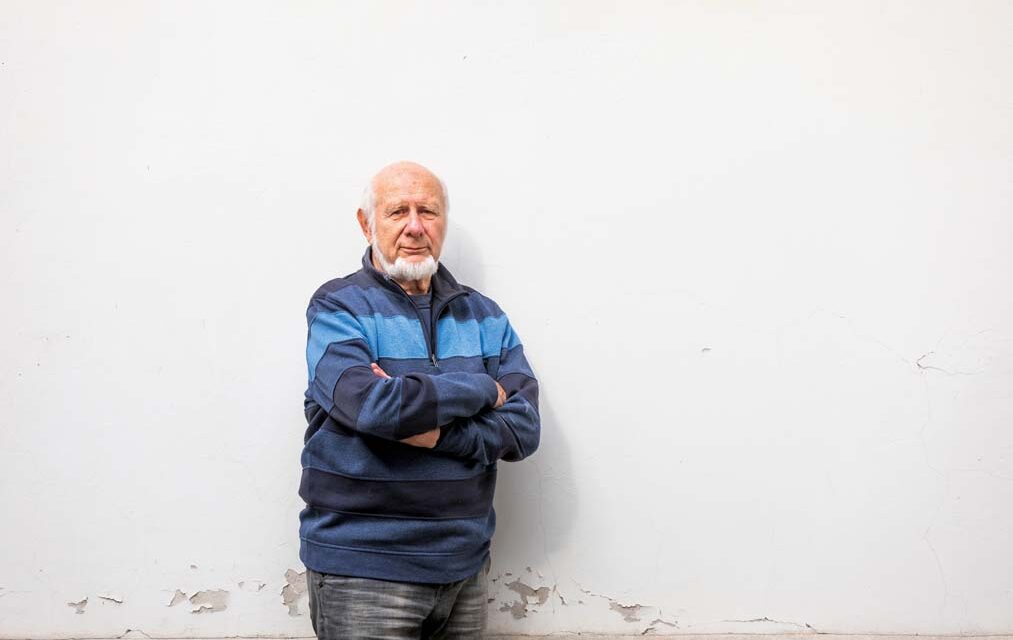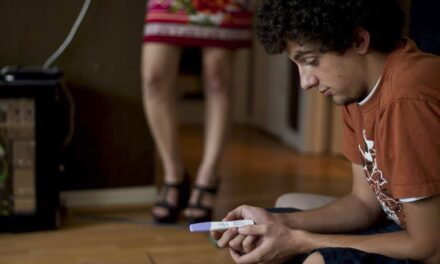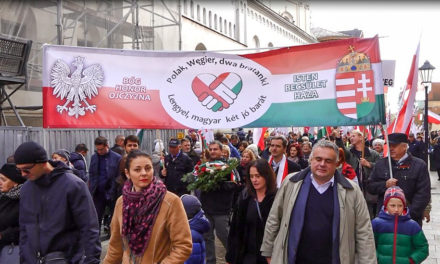If a Canadian oil tycoon doesn't come, the jewel of the oeuvre of Béla Ternovszky, the now-cult Macskafogó, will never be completed. The now Kossuth Award-winning cartoon director also talked about his father's imprisonment, the legendary figures of animated filmmaking, and how even though his back hurts, he still loves to ride horses.
Did you bring your drawing talent from home?
The men in our family were usually doctors and lawyers. Then, in the 1930s, my grandpa, the judge, told my father: son, the banking profession is the real deal! Of course, he did not count on the fact that the Second World War would come, then the communist regime, and from then on the banking industry would take on an ugly tone. My father still managed thirty-two years at the Magyar Nemzeti Bank, but he had problems. For example, he did not understand why he was constantly being asked for a CV. Then, in the tenth, he wrote that his uncle was the vice-president of the Court before the war, and his father was a court judge. The next day he was transferred to the Czechoslovak correspondence department, which had few more boring jobs.
Did they have other problems with the system?
After all, I didn't see my father for a long time because of politics: I was very young when he was taken prisoner by the Soviets. Our apartment in Budapest was bombed in the meantime, my mother and sister lived with my grandfather in Debrecen. My father was a prisoner of war for a total of three years, I hardly even remembered him. But very much for the day when he arrived home.
What happened then?
I must have been five years old, we were waiting in the apartment. My sister and I prepared with a poem that my grandfather taught us. There was a glass door between the hall and the great room, where his silhouette appeared. Then I saw my mother and father embracing; the image burned into me. Then my father came in, picked me up, held me close.
Did your father guide you towards art later on?
In a way, yes. My father was talented in many areas, perhaps too many. He could have been an actor, the Vígszínház called him, but my mother told him: "Béla, then I'm divorcing!" He also had a flair for music, he played the violin very well. This knowledge was very useful in the POW, because the Soviet guards loved music, so instead of forced labor, he could often stay in the camp to practice. He was also good at drawing. I drew a rooster when I was still very young, my mother showed it to my father, who from then on tried to steer me in this direction, even taking me to the national bank's department. I, on the other hand, wasn't very interested in it at the time, and in the next room they were showing old Hungarian films. Antal Páger and Klári Tolnay also sat there and watched pre-war cinemas on the projector, which they could not have done anywhere else. I regularly ran over there, next to them.
Then he almost became a doctor, and then he ended up in the Department of Aesthetics and Philosophy at the Marxism-Leninism Evening University. Was it so difficult for you to turn back to the path that your father had already set for you?
As I said, in our family, in addition to law, the medical career was the basis. My sister was a medic, and I also signed up for the preparation course, and we paid the money. My father let me do it, but maybe deep down he thought
let me figure out on my own that it's not for me.
That's how it happened, when they started talking to me about physics and biology at the preparatory class, it immediately became clear that I wasn't interested in it at all, and I didn't go anymore. We are talking about the early sixties. At that time, I read more and more philosophers: Kierkegaard, Camus, Sartre. I decided to enroll, even though people were usually sent there, preferably only trusted comrades. I, on the other hand, went to study, although I was aware that most of the instructors were staunch communists. There I met a teacher named Károly Nemes, who got me out of the system because he told us, the students, that he should teach the aesthetics of socialism, but there is no such thing. After three years, I took the final exam, and then came the fourth, when scientific socialism was to be taught. It would be, because I've already finished there.
How did you get to Pannónia Filmstudio?
I started as a phase drawing trainee and was immediately assigned to Attila Dargay. We created a large-scale fairy tale series entitled Artúr on an American commission, and I worked on it for the first time. Around that time, Pannonia already had a great reputation abroad, it was one of the five largest cartoon studios in the world, and Walt Disney was also on the list. Then the word trainee slowly disappeared, after two years I became a key draftsman, which is a higher level, he makes the most important phase drawings of the story. After that I worked as an animator,
then more and more beautiful jobs followed: I was a co-director for the Gusztáv series and the Mézga family.
When my film Modern training methods was completed, I received a lot of awards, and from then on I was really noted as a director.
The lyricist of the Mézga family was József Romhányi, who, although he did a lot for the cartoon genre, received hardly any recognition, he did not receive the Kossuth prize, and he could only receive the worthy artistic title only on his deathbed. What was their relationship like?
Yes, very painful thing you mention. József Romhányi initially wrote brilliant texts for TV, especially for Frédi és Béni, he was brilliant and inimitable. When Pannónia began the story of the Mézga family, it was suggested that a good dialogue writer was needed, and luckily they decided on him. He was a fairy man.
In the summer, he moved to Balatonakaratty, to his holiday home, he fished there, and many times the work meetings were held there.
Everyone thought that he also cracked jokes as a private person, but that was not the case. If he had company, it was usually not him, but the composer Fényes Szabolcs who was responsible for the atmosphere. The text and the joke are incredibly important anyway. I remember that Gusztáv initially had a good joke every ten seconds, after a while we realized that it would be good if there was one every minute.
And how was your relationship with József Nepp, who directed the Mézga family, who dreamed up Gusztáv, and who wrote the script for Macskafogó?
To me, he was the top of the world. I also said in my speech at the Hungarian Academy of Arts:
I learned what I know from Marcell Jankovics, but I owe everything I have achieved to József Nepp.
He took her to her side, pushed her to the front; he was a really good person without pride.
What did Jankovics learn from Marcell?
I always looked up to him, and I also had an excellent relationship with him as a private person. I would venture to say that my successful marriage was the inducer of his subsequent marriage.

Béla Ternovszky/ Photo: Márton Ficsor
How come?
We came home from a film festival in Zagreb with Marci Volkswagen Bogara. It was a long journey, we were tired and hungry. We got home after midnight, my wife was waiting for me, and of course she asked Marci to come up and have dinner with us. I remember it was fried meat and kohlrabi stew. We were hungry, we experienced it as a princely dinner. It was stated there that
if someone waits for you with a hot meal at night, then marriage is not so much to be dismissed.
He even asked for his bride's hand in marriage on a short trip.
And how do you remember the already mentioned Attila Dargay, with whom you started your career?
I looked up to him, he was a brilliant director, unfortunately he didn't get a Kossuth award either. I had an affair with him when I was young. When I was still a phase designer, one day they gave an aesthetics lecture during working hours, and I sat down to listen. Dargay came, didn't find me in my place, opened the door to the room and motioned for me to go. I said that I would listen to the lecture first, I would stay in the afternoon at most. He threw a tantrum, it was said, and he wanted to kick him out in his first fit of anger. The party secretary of Pannonia told him not to do it. Her name was János Komlós, unlike her comedian husband, she was a benevolent woman, but everyone knew that she used to work for the ÁVH. After all, that's how I ended up next to Marcell Jankovics.
And then came the climax of his life's work, the now cult Cat Catcher, which was presented in 1986. I read that for a long time it was impossible to finish.
That's exactly what happened. I wanted a full-length film, and according to practice, the script had to be presented to the Directorate General of Film, where they decided whether to support it, because the studio did not have a budget. They sent it back from there on the grounds that it does not coincide with their idea from a cultural and political point of view. Then, by some miracle, a certain Canadian emigrant named József Séfel appeared, who had made a good fortune in the oil business and thought he should give something back to his homeland. He applied at home to the Ministry of Culture to support something. The Pécs Ballet was suggested to him, but it was far away, so he came to Pannónia Filmstúdió to see if we had any plans that needed money.
He immediately liked the idea of the Cat Catcher,
and from then on he supported the film with a significant amount. Three-quarters of it was completed, then no more transfers came, his money ran out.
Matt.
It just snapped. The head of the Directorate General of Films and a comrade from Mafilm came to the annual reception, they looked at our previous work and only asked why we didn't say earlier that such good films were being made here. This was said by the person who previously rejected the script saying that it did not agree with their cultural and political vision.
The Catcatcher became a huge success abroad as well, although it was not shown in cinemas in the United States, it could only be bought on VHS tape. Is it true that Walt Disney had a hand in it?
The Americans
they don't like European competition, they prefer to quickly make their own version.
Of course, it cannot be proven that the Walt Disney studio lobbied against the film, but we did know that the American screening rights to Jankovics Marcell's wonderful hero János Marcell were bought by the Hanna-Barbera company for quite a bit of money - they also produced Tom and Jerry - , then the film ended up in a basement, never shown.
He spent his childhood and youth in Pomáz, and still lives here. Did your heart pull back?
Pomade means a lot to me. I remember when I met my future wife and she was willing to sit next to me in the car, I brought her out here so she could see what a beautiful countryside it is. Of course, the car, a 900 Wartburg, was not mine, but my father's, but we used it as a partner. I really like living here. I have two horses, I ride regularly, and although my back often hurts for a day or two afterwards, I love it. I restrained myself for a week before the presentation of the Kossuth Award, because I definitely wanted to accept it personally.
Unfortunately, his wife is no longer alive, but his daughters are there. Did they also pursue an artistic career?
My daughter Anna graduated from junior high school majoring in photography, Nóra works in the film industry, interpreting for American film productions being made here, and Zita became an interior designer.
How did you feel when you received the Kossuth Award?
Happiness.
This is the highest honor one can achieve as an artist.
When I took it over, it occurred to me that when my mother saw the Olympic victories of, for example, Krisztina Egerszegi or Tamás Darnyi, she always said: how happy this must be for their mother. He judged many things in life in terms of the mother-child relationship. So I thought how happy my mother would be now. I'd like to believe he knows up there.
Featured image: Márton Ficsor












